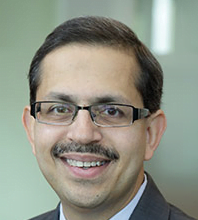Medical practice statutes are state laws that dictate who can and who can’t practice medicine. For the most part, they tend to say that only medical doctors and personnel operating under a doctor’s supervision can administer most medical care.
Medical practice statutes are state laws that dictate who can and who can’t practice medicine. For the most part, they tend to say that only medical doctors and personnel operating under a doctor’s supervision can administer most medical care.
One hundred and fifty years ago, when the first meeting of the American Medical Association was held, there were no such laws in the United States. In fact, it took organized medicine about 50 to 60 years to get most states to pass legal limits on the practice of medicine. More on this history here.
Then, in 1962, Milton Friedman made a bold proposal in his book, Capitalism and Freedom. He argued against all occupational licensing, including the licensing of doctors. These laws, he said, are not protecting patients. They are creating cartels that look very similar to medieval guilds. To protect patients, what we really need is certification, not licensing. Through certification, the government would verify that practitioners have the skills they say they have.
In what follows I assume that “certification” means not only the government giving its opinion about skills the practitioners have, but also preventing fraudulent advertising.
Let’s say there was a sign outside a shop that reads, “Trained to Give Flu Shots.” Then the government, in its role as a certifier, would determine whether the advertising claim is accurate. If accurate, the sign could stay and the practitioner could give people flu shots ― even if not a medical doctor and even if not a registered nurse.
But let’s say another shop has a sign that reads, “No Training in Giving Flu Shots, But Willing to Give You One Any Way.” We can all agree that this sign is probably prima facie accurate and I think Friedman would have allowed it. I know I would. The job of government is to prevent fraud, not to go around telling everyone what to do.
At first glance, certification might appear to be a much weaker regulatory approach. But in some respects it raises the bar much higher. Under current law, once a doctor has a license to practice medicine she can legally perform brain surgery ― even if she never received a minute of training in that field. Licensing doesn’t protect the patient from practitioners who claim to have skills they really don’t have. Certification, however, would do so.
What brings this whole issue to mind is an editorial in the Sunday New York Times on all of the ways non-doctors might practice medicine ― thereby relieving the expected doctor shortage. Among the suggestions:
- Eighteen states now allow nurses to deliver primary care without a doctor’s supervision and studies show that the quality of care is high.
- Nurses, operating in retail clinics (such as MinuteClinics), deliver care that is not only cheaper than conventional primary care, but more closely adheres to best practices.
- Pharmacists who work in federal agencies are allowed to start, stop or adjust medications, order and interpret laboratory tests, and coordinate follow-up care.
- Community aides, without the training of a PN or an RN, can deliver a lot of home-based care.
- Patients can be trained to successfully manage a lot of their own care.
Although the Times editorial does acknowledge legal barriers in some cases, it does not forcefully make this point: the reason we are not taking full advantage of these opportunities is government. At the state level, government is preventing non-doctors from practicing altogether. At the federal level, Medicare’s payment formulas discourage all of the above.
MinuteClinic, for example, had to fight the doctor’s lobby in practically every state to be able to carry out its business model. Even today it is constrained by requirements (which vary from state to state) that MinuteClinic nurses be under doctor supervision. By the way, Texas (which tends to be friendly toward the marketplace in other respects) has some of the most restrictive laws governing nurse practitioners in the country. We have previously noted that pharmacists were once allowed to dispense birth control devices and Louisiana Governor Bobby Jindal would like to see that happen again.
As for Medicare, we have previously noted that its formulas discourage the use of nurses and other paramedical personnel by automatically reducing payments for any service not delivered by a doctor.
Two reforms would move us in the right direction.
First, abolish medical practice statutes nationwide and let sate governments engage in certification instead. I realize we could also go about this piecemeal ― service by service and practitioner by practitioner. But a clean sweep would be so much more efficient and final.
Second, change Medicare’s payment structure. For example, if a local MinuteClinic is charging $40 for a flu shot, Medicare should pay $40 ― regardless of who gives the shot and regardless of who gives it.
Postscript: Some doctor friends of mine hated the NYT editorial, which arguably was disrespectful to doctors. Let’s separate out the disrespect, however, from the economics ― which were right on.







